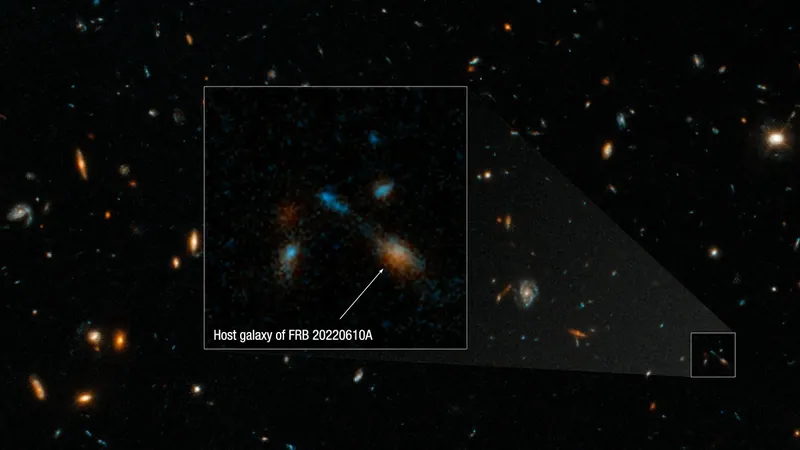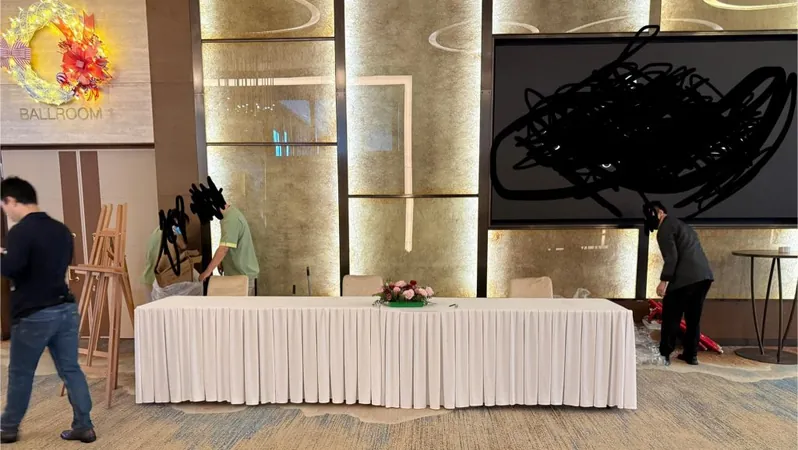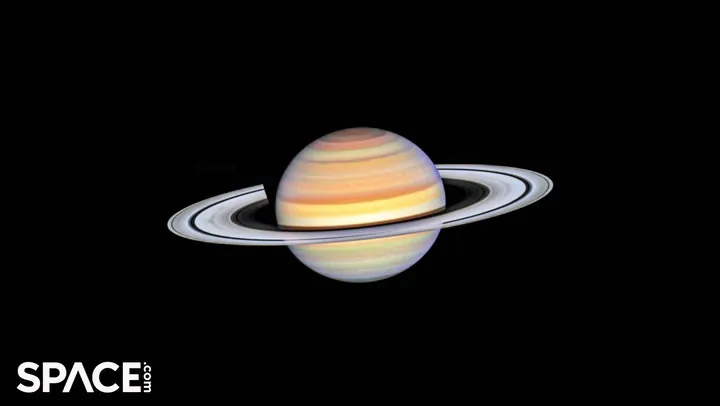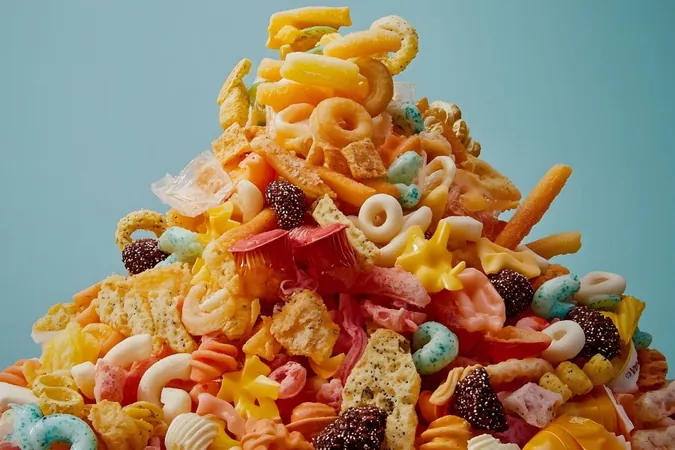
Groundbreaking Research Links Mysterious Fast Radio Bursts to Asteroid-Neutron Star Collisions!
2024-12-18
Author: Wei
Introduction to Fast Radio Bursts (FRBs) and Their Mystery
In a fascinating new twist in astrophysical research, scientists have put forth a groundbreaking hypothesis suggesting that fast radio bursts (FRBs) could originate from the dramatic collisions between asteroids and neutron stars—some of the densest and strangest objects in our universe.
Since their puzzling discovery in 2007, FRBs have left scientists scratching their heads. These sudden, high-energy flashes of radio waves unleash energy that can rival the Sun's output over several days, with the potential to equal humanity’s total energy consumption over 100 million years in just a split second!
Scientific Insights into the Origins of FRBs
Dr. Dang Pham, a leading researcher at the University of Toronto, highlighted the ongoing struggle to define the origins of these cosmic phenomena, stating, “FRBs so far defy explanation, with over 50 potential hypotheses of where they come from—we counted!”
The research team has made significant strides in connecting FRBs to interstellar objects (ISOs) like asteroids and comets, proposing that these collisions could occur frequently enough to account for the observable FRB rates.
Neutron Stars: The Giants of the Cosmos
To illustrate their point, they dive into what neutron stars truly are. Born from the remnants of massive stars after supernova explosions, neutron stars are tiny—just about 20 km (12 miles) in diameter—but pack a gravitational punch that far exceeds our Sun. These celestial giants have staggering densities, with a mere teaspoon weighing around 10 million tons!
The Nature of Cosmic Collisions
Dr. Matthew Hopkins from the University of Oxford elaborates on the nature of these intense cosmic collisions. When an asteroid is pulled into the extreme gravitational field of a neutron star, it accelerates towards light speed, ultimately vaporizing upon impact. This cataclysm generates a plasma ball that brightly flashes radio waves, which could register as an FRB detectable from light-years away.
Energy Release from Asteroid-Neutron Star Collisions
The researchers predict that when an asteroid about 1 km in diameter collides with a neutron star, which has a magnetic field trillions of times stronger than Earth's, it can release a staggering 10^29 Joules of energy—an amount that would be equivalent to what all of humanity uses in a year, multiplied by 100 million!
Challenges in Understanding Repeating FRBs
Despite the remarkable progress, the researchers also acknowledge a limitation: their model primarily accounts for single occurrence FRBs but struggles to explain the repeating type observed from certain sources, which can emit bursts up to twice per hour. Dr. Hopkins points out the need for further research on the nature of these repeating FRBs, which might be linked to neutron stars interacting with dense asteroid belts similar to our Solar System's.
The Future of FRB Research
Notably, the team's findings indicate that as the universe ages, the rates of FRBs may actually increase. The accumulation of neutron stars and interstellar objects could lead to a higher frequency of these remarkable cosmic collisions.
Looking ahead, researchers are eager to trace FRBs back to their home galaxies and understand their unique energy signatures. Projects like the Canadian Hydrogen Intensity Mapping Experiment (CHIME) and the Australian Square Kilometre Array Pathfinder (ASKAP) are poised to play pivotal roles in this expedition into the cosmos.
Conclusion
The collaborative research efforts from laboratories such as the University of Toronto and the University of Oxford illuminate a newly formed understanding of FRBs, edging closer to unveiling the energetic processes that govern our universe. In the words of Dr. Pham, “More FRB observations could also place more constraints on how energetic these events are, which will inform us about how FRBs are emitted.”
The quest to uncover the mysteries of the universe continues! Will future explorations unlock the secrets surrounding these cosmic enigmas? Stay tuned for groundbreaking updates as we unravel the mysteries of the universe together!





 Brasil (PT)
Brasil (PT)
 Canada (EN)
Canada (EN)
 Chile (ES)
Chile (ES)
 España (ES)
España (ES)
 France (FR)
France (FR)
 Hong Kong (EN)
Hong Kong (EN)
 Italia (IT)
Italia (IT)
 日本 (JA)
日本 (JA)
 Magyarország (HU)
Magyarország (HU)
 Norge (NO)
Norge (NO)
 Polska (PL)
Polska (PL)
 Schweiz (DE)
Schweiz (DE)
 Singapore (EN)
Singapore (EN)
 Sverige (SV)
Sverige (SV)
 Suomi (FI)
Suomi (FI)
 Türkiye (TR)
Türkiye (TR)